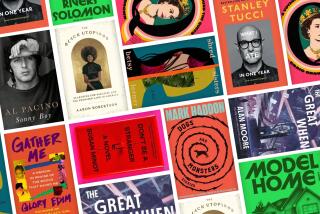‘The Best Technology Writing 2009,’ edited by Steven Johnson
The Best Technology
Writing 2009
Edited by Steven Johnson
Yale University Press: 224 pp., $17.95 paper
In his essay “Why I Blog,” Andrew Sullivan explores the etymology of “blog” (web log) and takes the reader back to the days of sail. On a ship, a log book was the place where the captain recorded the distance traveled, determined by a nautical instrument also called a log. Over time the device became obsolete, but the record remained, and “log” came to mean a book where important information was written.
For Sullivan, the terms “log” and “blog” are interchangeable. One makes an entry to be accountable to the present moment. Over time, it tells you not only where you’ve been but also how you got there, which a shrewd observer can use to prognosticate about the journey ahead.
“The most striking thing about the best technology writing of 2009 is how little of it focuses on the future,” editor Steven Johnson writes in his introduction. The reason for this is obvious to anyone who has been cellphone shopping lately. We’ve got all the future we can handle. Rather than make guesses, Johnson’s selections serve the same function as Sullivan’s log/blog: to measure where we are today rather than predict where we’ll be tomorrow.
Of course, by today we mean a year ago, as an anthology published in late 2009 by necessity incorporates material first published way back in 2008. Most of the essays -- post- iPhone, pre-Kindle 2 -- appeared in magazines, newspapers and even a few websites, and deal with phenomena involving emergent technology.
Among the highlights are Dana Goodyear’s take on the cellphone novel craze in Japan, which includes a trip to Tokyo for the crowning of the winner of the Japan Keitai Novel Award, which received submissions from 3,350 cellphone novelists.
“One novelist I met, a twenty-seven-year-old mother of two who lives in the countryside around Kyoto, told me that she thinks up her stories while affixing labels to beauty products at her factory job, and sometimes writes them down on her cell phone while commuting by train to her other job, at a spa in Osaka,” Goodyear writes.
Clive Thompson writes about a Facebook feature that ushered in a new age of “digital intimacy,” and Sharon Weinberger investigates how satellite mapping has changed the way countries spy on one another.
Perhaps the book’s most compelling piece is a profile of “a balding, slightly overweight, perpetually T-shirt-clad 26-year-old computer consultant named Dan Kaminsky,” who discovered a flaw in the World Wide Web’s domain name system that, if exploited by the wrong people, could have brought the Internet to its knees. Penned by Joshua Davis, a contributing editor at Wired whose work has appeared in two previous volumes of “The Best Technology Writing,” it’s a classic story of technology gone wrong, but what makes it so arresting is the portrait of the flesh-and-blood person that emerges.
After all, it’s not technology itself that has the capacity to upend our lives for the better or for the worse, but our eager reliance upon it for the most essential tasks and our helplessness when things go awry -- until a nerd in shining armor rides to our rescue.
Ruland is the author of the story collection “Big Lonesome.”
More to Read
The biggest entertainment stories
Get our big stories about Hollywood, film, television, music, arts, culture and more right in your inbox as soon as they publish.
You may occasionally receive promotional content from the Los Angeles Times.










